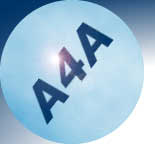|
The subject of noise generated
at civil aerodromes was debated
recently in the House of Commons when Theresa May, MP for Maidenhead, raised the issue in
relation to the situation at White Waltham. Her specific question was "...whether the
Government intend to follow their proposal last year to introduce legislation to allow
local councils to control flights of light aircraft at such airfields."
In posing this question a number of themes were
touched upon, including:-
 |
Many residents were
aware of the problem when they moved to the area, but that problems occur when noise
levels increase; |
 |
The difficulties in
fitting silencers to aircraft has "...been used by many fliers as a smokescreen
for not doing something about the problem"; |
 |
The issue is not
that the airfield should be closed, but that "Residents need a balance to be
struck between their needs and the needs of the airfield and its users"; |
 |
Nobody has the power
to enforce any controls other than through the planning system; |
 |
White Waltham is not
designated under section 5 of the Civil Aviation Act 1982, therefore current consultative
arrangements are only voluntary, not statutory. |
In closing, it was stated that the constituents
of Maidenhead "...feel strongly that powers should be available to enforce
controls on noise from light aircraft using airfields such as White Waltham."
The Minister for Transport Mr John Spellar
responded by reiterating the policy of successive Governments "...that aircraft
noise is a local issue that is best resolved locally". The legitimate right of
general aviation pilots to fly was recognised, but "...that right should always
be balanced with the interests of the communities that are disturbed by aerodrome
activities."
His statement outlined the Government's
position on the issues raised earlier, including:-
 |
The importance of
general aviation as a legitimate activity; |
 |
Aerodrome noise
abatement procedures and the need for considerate flying; |
 |
The need for
aerodromes to "...consult local amenity groups, local authorities and others
about decisions that are likely to affect the noise climate"; |
 |
When it comes to
aerodrome alterations and expansion, the role of the local planning authority which "...may
grant permission, subject to the relevant conditions, which might include noise-related
requirements..."; |
 |
The safety concerns
of the CAA in the fitting of silencers. |
In conclusion it was stated that "The
long-standing policy of maintaining a balance between the rights of general aviation
pilots to fly and the interests of the communities that are disturbed by aircraft noise
has generally proved successful. Nevertheless, the Government accept that aircraft noise
can be disturbing and that sometimes more should be done."
The Minister for Transport then outlined the
proposals and expectations presented in the Government consultation paper "The
control of noise from civil aircraft" as:-
 |
Providing aerodromes
with clearer powers to regulate flying behaviour; |
 |
The preference for
local solutions; |
 |
New powers for the
Secretary of State to require an aerodrome to agree a noise amelioration scheme where no
local solution can be found; |
 |
The ability of local
authorities to enforce such a scheme; |
 |
Independent
arbitration to resolve any disputes that may arise. |
|



